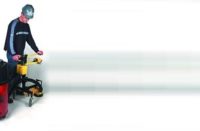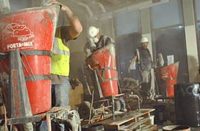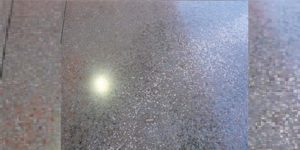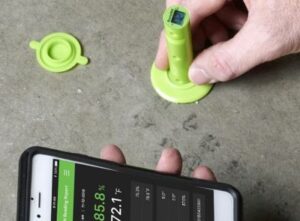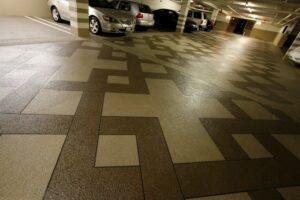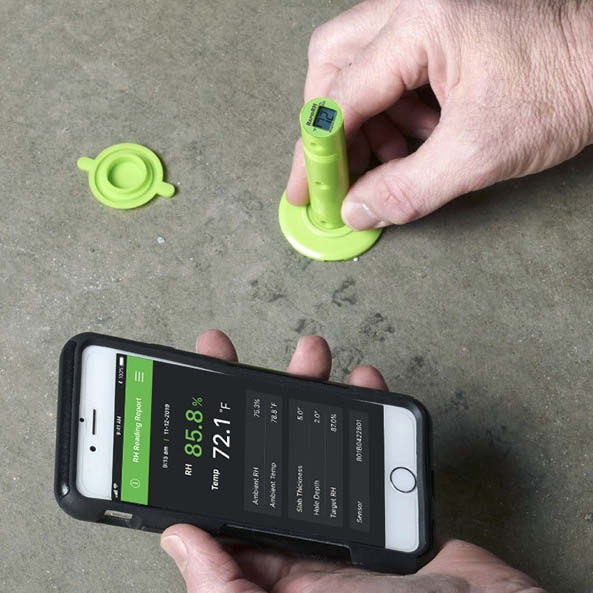
Understanding moisture movement through concrete is critical to successful flooring. It helps you reduce the risk for future moisture-related flooring failure during installation. It also helps you identify and assess the cause of moisture-related issues that have already occurred.
Dynamics of moisture movement
Despite its outward appearance, concrete isn’t solid. It’s filled with air pockets and veins. When poured, the concrete slab contains the batch water from the mix. As it sets, water begins to evaporate, and the air pockets and veins begin to form within the slab. These veins are called capillaries. As concrete hardens, batch water and vapor get pulled into these air pockets. This process is called “capillary action.”
Moisture also enters the concrete slab through external sources. Most slabs are poured over a vapor retarder because moisture from the ground below will seep into concrete. Sub-slab vapor is a primary cause of moisture-related distress in concrete floors that don’t have a moisture vapor barrier.

The air affect
Concrete will also pull moisture from the air and release moisture into it. It depends on whether the air is holding more or less moisture than the slab. This is why the relative humidity (RH) in the air and within the slab is so critical. The RH indicates how much moisture is already present relative to what is absorbable. If the air has an RH of 30%, it’s holding 30% of the moisture it can. If the RH of the slab is higher, moisture will tend to move from the concrete into the air. The reverse is true if the RH in the slab is lower than the RH in the air.
Yet, if the air has reached its dew point, vapor can concentrate on the surface of the slab. The dew point is the air temperature at which it can hold no more moisture. It’s determined by temperatures of the air and slab, and the RH in the air. If the temperature of the slab is below the dew point, condensation will appear on the slab’s surface. Knowing the dew point of the environment around the concrete is vital to assessing drying times and the moisture condition of the slab.
Excess moisture can cause problems
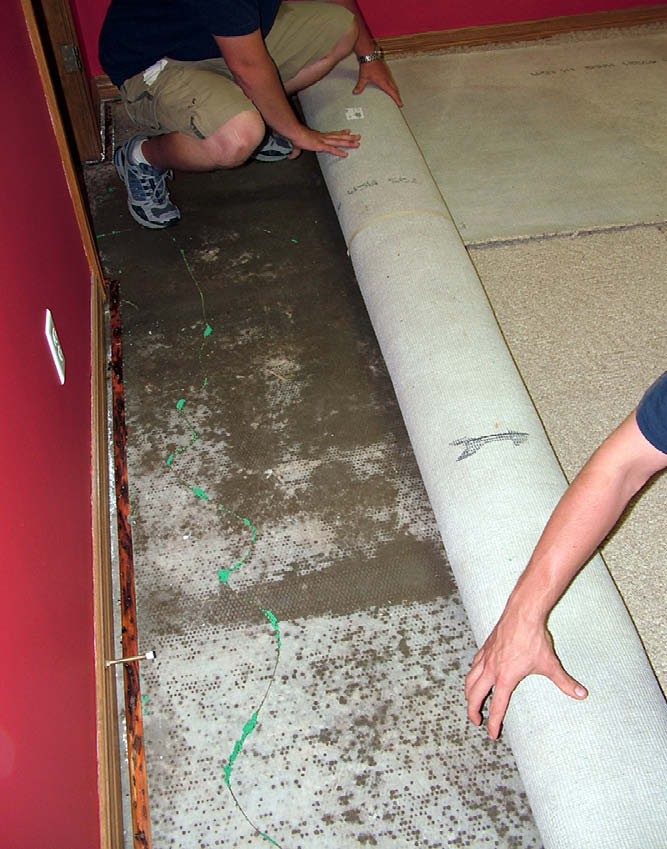
Excess moisture manifests itself in various ways that result in unsightly or possibly hazardous floor conditions.
These are some of the ways moisture-related distress shows up on concrete flooring:
- Moisture pulled from the slab through an adhesive or synthetic resin gets trapped below a nonpermeable floor covering. The swelling results in osmotic blisters.
- Microbial growth occurs when there’s excessive moisture in the concrete and high levels of humidity in the air. Microbial growth can corrode and weaken concrete. Signs of microbiologically induced deterioration include cracking and flaking on the surface.
- When moisture rises to the surface, it brings salts within the concrete with it. The moisture will eventually evaporate, but the salts remain. They can show up as efflorescence, those white streaks and stains that appear on concrete.
- The salts also cause adhesive degradation, which can result in floor coverings separating from the slab. Flooring separation can also occur due to coating debonding (also called delamination). Rising moisture trapped underneath impermeable flooring will bring very basic chemicals with it to break down the bonding agent or laminate agent.
Test before flooring goes on
Ensuring the concrete slab has released enough excess moisture and has reached levels stipulated by the flooring or adhesive manufacturer before installation is your best opportunity to prevent moisture-related failure.
Measuring the RH of the air is straightforward. Measuring it in the concrete slab requires using RH sensors embedded into the slab. ASTM F2170 (Standard Test Method for Determining Relative Humidity in Concrete Floor Slabs Using In Situ Probes) sets out the requirements for conducting an RH test properly.
Based on decades of scientific research, the RH in situ probe is the most reliable and accurate method of measuring the RH within the slab. It’s the only concrete moisture test that measures moisture below the surface. Knowing how moisture moves through concrete, it’s clear why tests that measure the surface are unreliable.
The affect of the ASTM F2170 standard
Since the ASTM F2170 standard was first published in 2002, the science on RH testing has evolved and so has F2170. Most recently, the standard reduced the waiting period needed between inserting the RH probe and taking a reading from three days down to 24 hours.
As technology improves, RH in situ test kits have also. Today, there’s a test kit on the market that uses a pen-sized electronic device to capture readings from the RH probes and send the data via Bluetooth to an app. The app automatically logs the data from these “smart sensors” and produces emailable F2170 reports, eliminating the possibility of human error.
You can install these “smart sensors” very early in the concrete slab drying process to collect periodic readings that will help users more accurately estimate drying time. More accurate estimations allow for tighter scheduling and less downtime.
Regardless of which kit you choose to use, RH in situ testing is always the most accurate method to determine a concrete slab’s moisture condition.
More on moisture
Do you want to learn more about moisture in concrete and the hardening process? Check out Wagner Meters’ library of resources at www.wagnermeters.com/concrete-moisture-test/concrete-info/.
Wagner also offers a free webinar twice a month that takes a deep dive into the science of moisture and concrete. You can sign up for the online training course at www.wagnermeters.com/concrete-moisture-test/free-concrete-moisture-webinar/.
